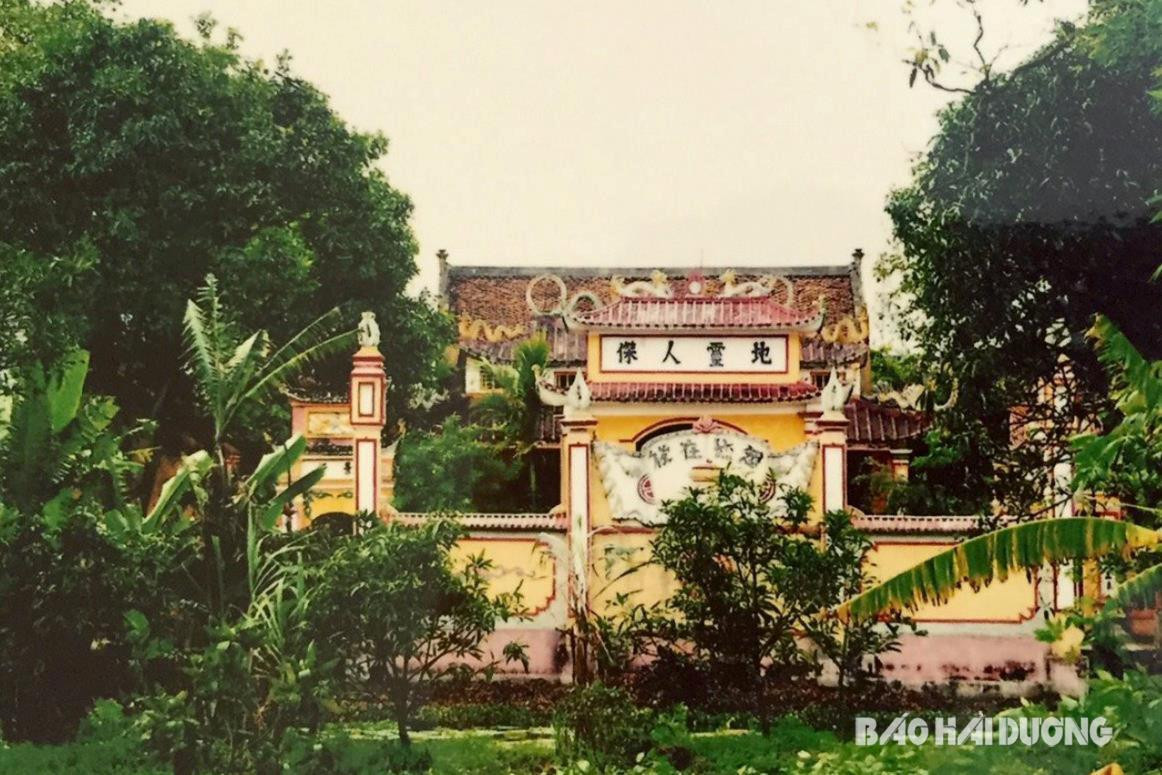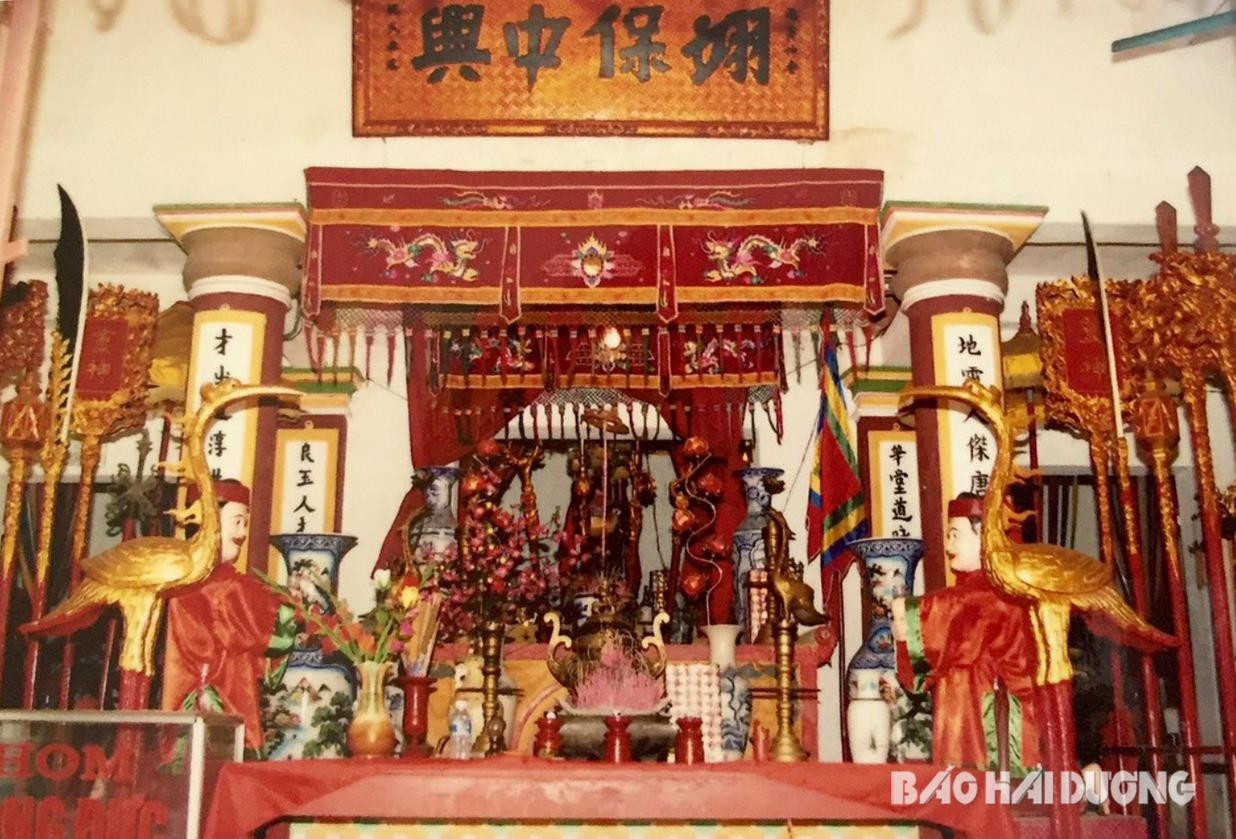Luong Ngoc Communal House, Thuc Khang Commune, Binh Giang District (Hai Duong) worships the village's tutelary god, Doctor Vu Thieu, a famous person who was conferred the title of god who was loyal to the country and kind to the people.

"I do not serve two lords"
According to historical sources, the Vu family genealogy in Luong Ngoc village and the system of royal decrees and parallel sentences still preserved at the village communal house, Vu Thieu (year of birth and death unknown), was from Ngoc Cuc commune, Duong An district (now Thuc Khang commune, Binh Giang district). He passed the third class of the same doctoral exam, Quy Suu exam, Hong Duc 24 (1493). During the Le dynasty, he was appointed to the position of Imperial Censor.
When the Mac dynasty (Mac Dang Dung) usurped the throne of the Le dynasty (in 1527), Vu Thieu refused to accept it, so he retired from office, returned to his hometown, built a house in the Ngo Lang area, and lived in seclusion, taking the name Ngo Lang hermit.
Dr. Vu Thieu was devoted and made many contributions to his homeland. After a while, the Mac Dynasty invited him to return as an official, but with a loyal heart, "a loyal subject does not serve two lords", he committed suicide in the river to preserve his integrity.
When the Le dynasty restored the throne, they awarded him the title of Toan Duc Ngo Lang Trung Dang Than. The next dynasty honored him as Thuong Dang Than and built a temple to worship him in his hometown.
During the reigns of King Tu Duc 33 (1880) and Dong Khanh 2 (1887), he was conferred the title of Intermediate-level god - Ngo Lang (family name Vu) who was loyal to the country, kind to the people, had extensive education, was clear-sighted, glorious, virtuous, and talented. He was allowed to worship the god in Luong Ngoc commune (now Luong Ngoc village) as before.
Rich in cultural and architectural values

According to local elders, Luong Ngoc communal house was built quite early, then due to unfavorable direction, affecting the prosperity of the village, the An Phu Su official, Ho Tong Thoc, who knew about feng shui, supported its renovation. The communal house is located on a land of Kim Tinh Lac Thuy, a favorable position for academic achievements, so many people in the village often achieved high results.
In the year of Binh Ngo (1906), the communal house was rebuilt by the father of Mr. Vu Huy Chan, a native of Luong Ngoc village. The communal house was built in the shape of the Chinese character Nhi (=), consisting of 3 main halls and 3 rear halls, with four-piece wooden rafters. Separating the main hall and the rear hall is a parasol courtyard, also known as the dragon courtyard.
In 1932, the communal house was further renovated and upgraded. This was not only a place to worship the tutelary god but also a place to hold meetings of revolutionary cadres. In 1947, French colonialists entered the village and burned down the entire communal house.
After many years, the local people shared the wish to rebuild the communal house on the old land. From 1996 to 2005, the communal house worshiping Doctor Vu Thieu was restored on a large scale, with a budget of billions of dong from socialized sources. The communal house has all the items including: the ceremonial gate, the gate, the yard, the house to release weapons, the main communal house... The main communal house's exterior is decorated on the ridge according to the design of two dragons facing the moon. The roof system is in the style of eight overlapping roofs, with curved corners. The trusses are made of wood combined with reinforced concrete. In the middle of the sanctuary, an altar is built from low to high, in which the top level is the throne and the tablet worshiping Doctor Vu Thieu.
The communal house still preserves many valuable antiques made of wood, ceramic, paper, stone and bronze such as: 2 royal decrees, 1 set of thrones and tablets; 2 statues, 2 stone pillars, 2 stone elephants, 2 stone incense bowls, 16 bricks with Bodhi leaf patterns and longevity characters from the Nguyen Dynasty; the "Luong Ngoc Vong Dinh" bell cast in the 3rd year of Thanh Thai (1891); the "Thach Kieu Bi Ky - Cung Tien Hung Tao" stele erected in the year of Mau Tuat - Vinh Thinh 14 (1718); the "Tu Duong Bi" stele erected in the year of Mau Than (1788) and some other worship objects.
To show their respect, every year at the temple worshiping Doctor Vu Thieu, local people hold a traditional festival in January. Before the August Revolution in 1945, the festival took place from the 11th to the 15th, of which the 13th was the main festival, commonly known as the god's birthday.
On the 10th, the elders and young men in the village clean the altars and prepare the palanquin for the procession. On the 11th, the palanquin procession is held from the communal house to the Che pagoda to worship Buddha, then to the Ha temple and back to the communal house to worship. The offerings to the saint include pigs, sticky rice, fruits, betel, and wine, which are made by the four groups. Nowadays, due to lack of conditions, the festival is held on the 12th and 13th.
The communal house has been ranked as a historical relic by the Provincial People's Committee according to Decision No. 3834/QD-UBND dated November 2, 2009.
NHAT HUU